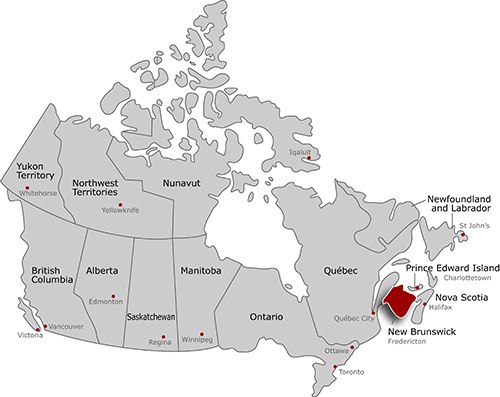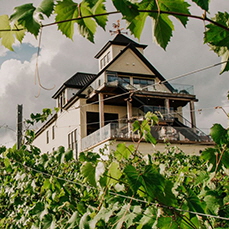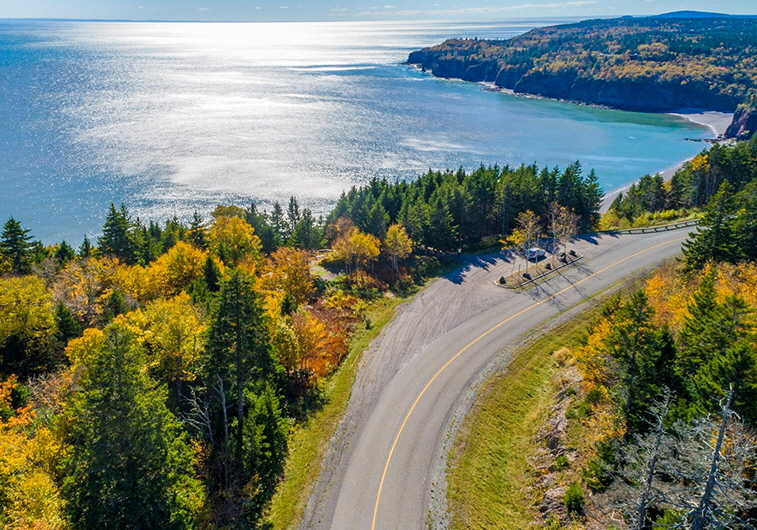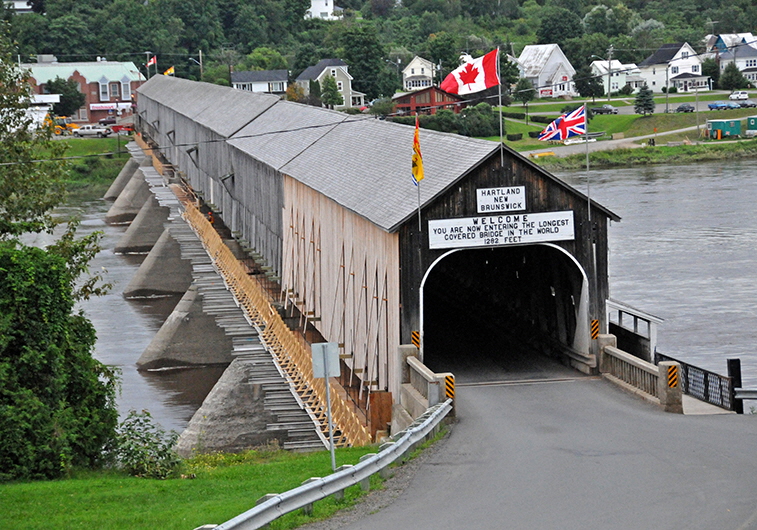|
Home > New Brunswick
 Saint Andrews, New Brunswick Introduction to New BrunswickNew Brunswick (NB) is Canada's largest Maritime province, and one of the four original provinces of Canada that entered the confederation on July 1, 1867. New Brunswick has spectacular natural wonders, such as the Bay of Fundy which has the highest tides on earth and is one of the Marine Wonders of the World. More than 80% of the province is covered by forests. While the provincial capital is Fredericton, Saint John has the highest population. New Brunswick’s rural economy is best known for forestry, mining, mixed farming and fishing. Citiy economies are dominated by health care, education, retail, and finances. Read more about New Brunswick below under Trivia and Facts; view areas, towns and parks; or check out the businesses and organizations listed by interest categories. Cities, Towns & CommunitiesCentralBlacks Harbour EastAlma Grand Manan & White Head IslandsWestCampobello Island ParksNP: National Parks NB TriviaFlag Nicknames Provincial slogan License plate slogans News Other resources Interests in NB: Accommodation | Arts & Culture | Eat & Drink | Products & Services | Things to Do New Brunswick FactsDate NB entered confederationJuly 1, 1867 Area of NB72,908 sq km (28,149 sq miles) TopographyA triangular region called the Maritime Plain covers a third of New Brunswick. The Highland region is underlain by hard granitic rocks and has thin, stony soil. The Saint John River’s narrow lowlands contain fertile soil. In the north, there is the rugged plateau of Miramichi Highlands, the Chaleur Uplands, and the Notre Dame Mountains. Capital city of NBPopulation of NB775,610 (Statistics Canada, 2021 Census) Residents are known asNew Brunswickers Indigenous people of NBMi’kmaq, Wolastoqiyik (Maliseet), Peskotomuhkatiyik (Passamaquoddy) (Source: Explore New Brunswick > Indigenous) Main NB industriesManufacturing, forestry, mining, agriculture and fisheries, tourism NB statutory holidays (in addition to national holidays)New Brunswick Day Professional sports teamsNone 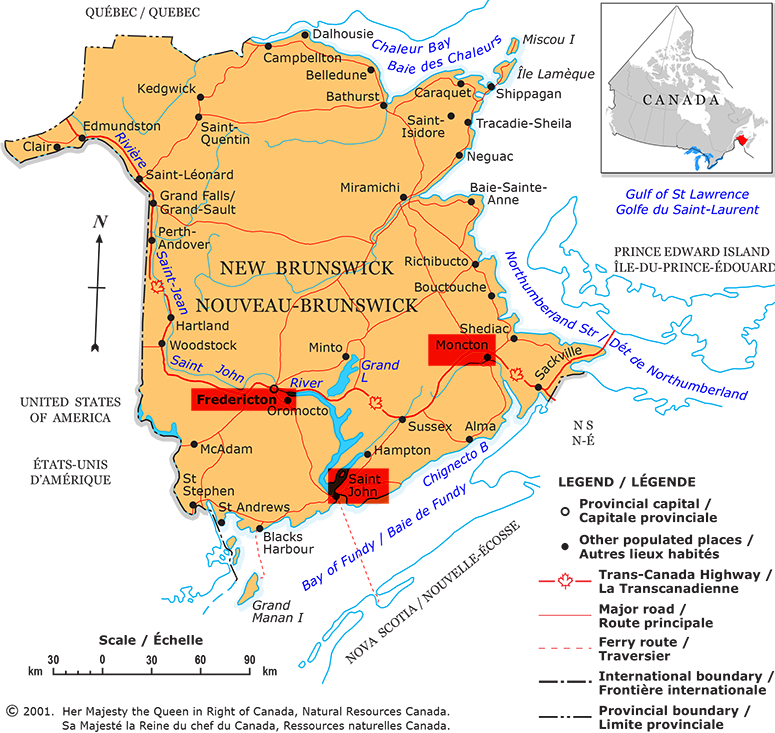 Source: Government of Canada Maps ClimateThe northern part of New Brunswick has a continental climate with cold winters and warm summers. The southern part has a moderate maritime climate, with milder winters and cooler summers. Precipitation is fairly evenly distributed throughout the year. Fog is common in spring and early summer on the Bay of Fundy coast. Time zoneAtlantic Standard Time (AST) observes daylight savings time. Owned and operated by Canadian Only Inc. Copyright 2000-2025 |

